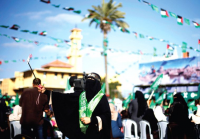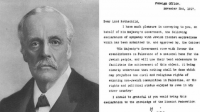
Links
Sheba Medical Centre
Melanie Phillips
Shariah Finance Watch
Australian Islamist Monitor - MultiFaith
West Australian Friends of Israel
Why Israel is at war
Lozowick Blog
NeoZionoid The NeoZionoiZeoN blog
Blank pages of the age
Silent Runnings
Jewish Issues watchdog
Discover more about Israel advocacy
Zionists the creation of Israel
Dissecting the Left
Paula says
Perspectives on Israel - Zionists
Zionism & Israel Information Center
Zionism educational seminars
Christian dhimmitude
Forum on Mideast
Israel Blog - documents terror war against Israelis
Zionism on the web
RECOMMENDED: newsback News discussion community
RSS Feed software from CarP
International law, Arab-Israeli conflict
Think-Israel
The Big Lies
Shmloozing with terrorists
IDF ON YOUTUBE
Israel's contributions to the world
MEMRI
Mark Durie Blog
The latest good news from Israel...new inventions, cures, advances.
support defenders of Israel
The Gaza War 2014
The 2014 Gaza Conflict Factual and Legal Aspects
To get maximum benefit from the ICJS website Register now. Select the topics which interest you.
5000-year-old Assyrian Culture Facing Devastation
"After all, killing the 'kafirs' [non-believers of Islam] was a 'good deed'. They were told 'their place in heaven was guaranteed.' Just like ISIS gangs... and that they would also take their relatives in hell to heaven." — Sabri Atman, Assyrian Genocide and Research Center.
When ISIS invaded Mosul in August 2014, Christian families were told by ISIS: "We offer [Christians] three choices: Islam; the dhimma contract -- involving payment... if they refuse this, they will have nothing but the sword."
"There is a great parallel between 1915 and what is going on in the Middle East today. ... The most effective way to prevent future slaughter is to condemn past slaughter. Denying such a big crime means its continuation. The wish for genocide still exists in the Middle East." — Sabri Atman.
"The Turkish authorities let a few Assyrians stay to show Europe and the world how good-hearted and tolerant Turkey and Islam are. ... And they say, 'Assyrians lead their lives so happily thanks to this great tolerance!'" — Sabri Atman.
The recent invasions and massacres committed by the Islamic State (ISIS) and Al-Qaeda terrorists in Iraq and Syria have brought a persecuted but mostly forgotten people to the attention of the world: the Assyrians.
The Assyrians, a native people of Mesopotamia, have been exposed to massacres before -- throughout history, in fact.
Due to these campaigns of extermination, the demographic character of the region has been changed greatly.
Before 1915, the population of the territory that is now Turkey was about 15 million, about 4.5 million of which was Christian (nearly a third). Today, one can hardly even talk of a Christian minority. The approximate population of Turkey is 80 million, but there are only around 120,000 Christians, less than 1% of the population.
In 1915, a slaughter of minorities took place, the purpose of which was apparently to "Turkify" and Islamize Anatolia into a country with one language, one flag, one religion and one nation. To achieve this objective, all non-Turkish communities -- Armenians, Assyrians, Greeks, Jews, Yezidis, Kurds and others -- were targeted.
But there was a difference between Christians and non-Christians. Non-Christian minorities were to be assimilated; Christians were to be exterminated.
According to the founder and the president of the Assyrian Genocide and Research Center (Seyfo Center)[1], Sabri Atman, there are links between the massacre of the Assyrians and the current massacres of Christians in the Middle East:
"Just like all Assyrians, when I was a child, I heard what had been done in 1915. The people were going through a trauma. Especially the elderly people still with fear in their voices fear about what they had experienced. Now I tell about the grievances of my people to try to get support for them.
"In the Ottoman Empire in 1915, the Ottoman-Turkish Party of Union and Progress slaughtered Christians -- Armenians, Assyrians and Greeks. Most of the Assyrians were murdered with swords. Many Kurdish tribes also joined in the killings, using their swords -- Seyfos -- against their neighbors, the Assyrians.
"It is hard to give an exact number of victims; about 350,000 to 500,000 Assyrians lost their lives. The carnage was not only about murdering people. The lands and property of Christians were also seized. One of the most important outcomes of 1915 for many Turks was the wealth they built on the property of Armenians, Assyrians and Greeks. Today there is not a single Assyrian in provinces where once there were so many -- so what happened to their lands, goods and property?
"It was the same with the Armenians and Greeks. The Cankaya Palace, the residence of former presidents of Turkey in Ankara, was originally the property of an Armenian, Odian Efendi. If you go to provinces where Armenians, Greeks and Assyrians used to live in Turkey, you would learn that all of the old and magnificent buildings you see used to belong to Armenians, Greeks or Assyrians.
"Some of the wealthy elite ruling Turkey became wealthy from property they forcibly took from the Christians. So one of the reasons they deny what happened in 1915 is that they are afraid one day they might lose the wealth they took cost-free."
Other slaughters include:
- Massacres by Badr Khan Beg, a Kurdish emir, against Assyrian Christians known as Nestorians. They took place in 1843-1846 in the province of Hakkari and throughout the Ottoman Empire.
- Massacres against Armenians and Assyrians by the Hamidiye Corps in the Ottoman Empire in 1894 and 1896.
- The Simele Massacre of August 7, 1933, by the armed forces of the Kingdom of Iraq. More than 3000 Assyrians were slaughtered, not only in the town of Simele. It also took place in the 68 Assyrian villages of the provinces of Duhok and Nineveh in Iraq.
"A lawyer who was profoundly influenced by the Simele massacre coined the term genocide," Atman continued. "Raphael Lemkin called it genocide. He used word for the first time in 1944, and applied it to the Armenian massacre, the Holocaust and Simele massacre."
In 2015, the extermination of Assyrians is still going on, as Assyrians and other Christian communities are being uprooted from countries in Middle Eastern. According to Atman:
"All of the data at hand shows that 1915 was a project of homogenizing Turkey. The Turkish Republic is a state largely established on Christian slaughters. But massacres against Assyrian people are not very much known even in Turkey. They have intentionally been hidden.
"Upon the prompting of Germany, on November 14, 1914, in all mosques of the Ottoman Empire, a call for jihad was made. Their main objective was to have Muslims in the British and French colonies start a riot, which would have empowered Germany and the Ottoman Empire. But things did not turn out the way they had planned.
"After the mosques sent out the call for jihad, many Muslims started massacres against Assyrians and other Christians. After all, killing the 'kafirs' [non-believers of Islam] was a 'good deed'. They were told 'their place in heaven was guaranteed.' Just like ISIS gangs, they were also promised - based on the Quranic verses and the hadith - that they would get '72 virgins' and that they would also take their relatives in hell to heaven."
When ISIS invaded Mosul in August 2014, Christian families were told by ISIS terrorists that they would be killed if they did not pay a protection tax (jizya) or convert to Islam. The warning was read out in Mosul's mosques and broadcast throughout the city on loudspeakers. "We offer [Christians] three choices: Islam; the dhimma contract - involving payment... if they refuse this, they will have nothing but the sword," the announcement read.
On September 23, in Syria, ISIS executed three more Assyrians by gunshots to the back of their heads, the Assyrian International News Agency reported.
They were part of the group of 253 Assyrians abducted by ISIS on February 23, when it overran 35 Assyrian villages in Hasakah Province in Syria.
In the video recorded by ISIS that shows the execution, ISIS said that if ransom for the remaining Assyrians is not paid, they will be executed as well. ISIS has demanded $50,000 for each hostage, a total of more than $10 million.
On November 25, ISIS released ten more Assyrian Christian hostages in Hasakah Province, but over 150 remain captured and threatened with death.
"There is a great parallel between 1915 and what is going on in the Middle East today -- in terms of destruction of non-Muslim civilizations and the continuity of Islamic jihad," Atman said. The problem, according to Atman, does not stem from people's belonging to certain ethnic groups; the problem is the denial of the realities of the past.
"Similar calls for jihad against Assyrians and Yezidis were made 100 years ago. Women and girls were raped; the Seyfo (sword) was used to behead people just as it is today.
"When the massacres and human rights violations of the past were not sentenced sufficiently, it paved the way for new massacres. The most effective way to prevent future slaughter is to condemn past slaughter. But the wish for genocide still exists in the Middle East, including Turkey. Turkey is still ruled by a President who says 'Muslims do not commit genocide.'"
 Left: A memorial in France commemorating the 1915 Assyrian Genocide in Turkey. Right: An Islamic State member destroys a Christian tombstone in Mosul, Iraq, in April 2015. |
Throughout centuries, Islamic jihad has not changed but, sadly, even in the 21st century Turkish children are still taught a distorted version of history at their schools; as a result, generations are being raised to have a Turkish-Islamic supremacist mindset.
"We all have been exposed to a historical narrative based on lies," Atman said about Turkish schools. "The official history of Turkey is, 'Turkish propaganda for Turks.' Information such as 'The state of Turkey fought against imperialism' is incorrect. The Ottoman Empire joined the First World War with imperialistic desires and formed an alliance with Germany. The war, presented as 'the Turkish war of Liberation,' was in a way a war to annihilate Christians, Alevis, Yezidis and other non-Muslim groups in Anatolia. So it would not be wrong to say that the Turkish Republic was established on Christian massacres and the denial of Kurds."
Atman said that during his time in Turkey, he saw non-Turkish and non-Muslim children being exposed to forced assimilation at school.
"I was born in Turkey and went to primary, middle and high schools there. Before our classes got started, we sprang to attention and were made to read at the top of our voice the Turkish Student Oath in which we said, 'I am a Turk' and 'My existence shall be dedicated to the Turkish existence.' Textbooks claim that in the First World War, Assyrians and other Christians 'stabbed Turkey in the back in cooperation with the imperialistic states' and that Assyrians were 'treacherous'. They brainwash Turkish schoolchildren like that; then the Muslim children look at the Assyrian children with suspicion."
"When I was at middle school, we had a teacher; the moment he entered the classroom, he asked 'Are there Christians here? Christians, raise your hands!' A few children would shyly raise their hands. The look in his eyes spoke volumes. But the attitude of one teacher is never a criterion for assessing a whole society. The problem is not which ethnic group a person belongs to, but the monist ideology of Turkey [one language, one nation, one state, one religion] and its denial or distortion of history."
Turkifying Anatolia and denying the identities of others is still rife, Atman said. "Turkish authorities still say that 'Turkey belongs to Turks.' That is a big lie. Before Turks came to Anatolia, we had been living there. But 'Turkey belongs to Turks' is still the slogan in the logo of one of Turkey's best-selling newspapers.
"In any event, Assyrians are one of the most deeply-rooted indigenous peoples of Mesopotamia. Assyrians have lived on that land for more than 5000 years. The Turks came to Anatolia only in 1071. At least, that is what the Turkish textbooks say. They came later and drove us out."
Assyrians still live with the consequences of the extermination campaign they were exposed to 100 years ago. The destruction is still going on. But that campaign of extermination is still denied today. Denying such a big crime means its continuation.
"In Turkey, there are still threats such as, 'We will root them out' or 'We will exterminate them.' To a large extent, they have succeeded. They murdered more than 300,000 Assyrians and forced almost another 300,000 to be exposed to assimilation in many countries across the world."[2]
Today, in Turkey, there are only about 15,000 Assyrians left, and they are not officially recognized as a people.
"Assyrians are recognized only as a religious congregation, so that state authorities can benefit from them. They let these few stay to show Europe and the world how good-hearted and tolerant Turkey and Islam are. They talk about the 'great tolerance' of Turkey and Islam. And they say, 'Assyrians lead their lives so happily thanks to this great tolerance!'
"What some people in Turkey proudly say is, 'Elhamdulillah [thank Allah], 99% of Turkey is Muslim.' They brag and boast about it. It should actually put them to shame; we know very well how they made it happen.
"What is done to Assyrians, Yezidis and others should concern everyone; what is massacred there is the humanity of everyone. If it happens there, it can happen to them. We ask all great powers of the world, everyone, to hear the screams of our people and help."
Uzay Bulut, born and raised a Muslim, is a Turkish journalist based in Ankara.
[1] The Assyrian Genocide Research Center (Seyfo Center), an international organization headquartered in Sweden, was established in 2005 and has offices in Germany, Holland, Switzerland and the U.S. Sabri Atman, an award-winning human rights activist and researcher, is a member of the International Association of Genocide Scholars (IAGS). He has received countless awards and is now based in the U.S.
[2] According to Atman, it is estimated that Assyrians live in the U.S. (300,000), Australia (35,000), Europe (300,000), Canada (30,000), Iraq (500,000), Syria and Lebanon (50,000). There are Assyrian communities in Iran, Jordan, Argentina, Brazil and many other countries as well.
- Follow Uzay Bulut on Twitter
# reads: 422
Original piece is http://www.gatestoneinstitute.org/6976/assyrians-genocide





















